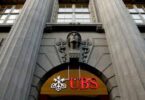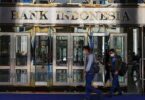WASHINGTON (Agencies): Temperatures are not the only thing rising in the Sun Belt as spring approaches. With inflation showing no signs of slowing, cities in The Sun Belt are being particularly impacted by rising prices. Six of the top 10 metro areas seeing the highest inflation during Joe Biden’s presidency are in The Sun Belt, including Phoenix, Tampa, Atlanta, Miami, San Diego and Riverside-San Bernadino, Calif.
Phoenix has the highest inflation rate in the country at nearly 11%, and for residents and businesses alike, frustration is rising. “I blame the Biden Administration—there is no other way around it,” 54-year-old resident Vanessa Weeks tells The Wall Street Journal. Weeks has been using ride shares and trying to cut down on home heating due to rising gas prices. In the Phoenix area alone, gas prices are up 44%, and natural gas prices are up 17%.
Phoenix Housing Prices Up 11.8%
While rising gas prices dominate today’s headlines, Jim Rounds, an economist in the Phoenix area and President of Rounds Consulting Group, noted to KTAR News, “It costs more for food. It costs more for other products because of the distribution costs. So, overall, when you see the high gas prices, that’s only the tip of the iceberg.”
Alongside rising food and gas prices, housing prices are especially high in Phoenix, 11.8%, far higher than the nationwide 5.9% average. Though tens of thousands of new apartment units were built in Phoenix last year, the supply is not keeping up with demand.
Arizona’s capital city saw the most population growth out of any U.S. city in 2021, with over 85,000 people moving to Phoenix last year. For the housing market especially, the two trends of rising prices and population growth are directly correlated with each other.
Housing, Food Inflation Taking Its Toll
In Tampa, just like in Phoenix, housing demand is outpacing supply. South Tampa Chamber of Commerce CEO Kelly Flannery tells Newsmax Finance, “We are seeing lots of new construction, but housing prices continue to go up.” Alongside housing, which cost 4.4% more in January compared to last year, food prices have risen 7% over the past 12 months, according to The Tampa Bay Times.
The continuing inflation has left Tampa area consumers and businesses struggling.
Flannery explains: “People are seeing prices increase at the grocery store for dairy products. Mom-and-pop businesses need to increase prices and change their menus, and as prices continue to increase, it is being passed onto the consumer. For small businesses, it is [especially] a big challenge.”
In a prime example, prices for meat, eggs and poultry at Tampa area grocery stores have increased by 22.5% between November 2020 and November 2021, far outstripping the national average 2.4% price increase for dairy products and 1.9% increase for alcohol. The average trip to Tampa area grocery stores costs 4% more than compared to a year ago, and there are shortages on shelves for items like cat food and cream cheese.
Local caterer Peggy Davenport tells Fox’s Tampa affiliate, “ I’ve never seen prices increase like this, ever. My packaging costs doubled in one week and went from $6.99 for six plastic bowls to $12.99 overnight,” adding that she is “now paying 40% more for supplies and food.”
‘Touching Everything and Everybody’
Georgia’s largest city is another location that has seen an influx in new residents, but the city, affectionately called “Hotlanta,” is also seeing a red-hot housing market. Demand is outstripping supply, and the Atlanta metro area is experiencing double-digit inflation, at a rate of 10.6, higher than the national average of 7.9%. In fact, inflation in the region is the second-highest in the country, trailing only behind Phoenix.
Karen Bremmer, president of the Georgia Restaurant Association, tells Newsmax Finance that the reality of double-digit inflation is hitting many of the Atlanta area’s six million residents hard, across several industries.
“This inflation has so many tentacles attached to it,” she says. “Between the supply chain shortages, cost of fuel, labor shortages, hospitality industry shortages, it is touching everything and everybody. Many companies are now charging fuel surcharges. Inflation has [impacted] every part of business, and with the worker shortage, there are also shortages in mass transit workers in Atlanta.”
As in Phoenix and Tampa, unaffordable housing and higher food prices have led to more inflation-related consequences for Georgians, Bremmer says. “As the cost of housing has increased in Atlanta, people have to go further out of the city to find affordable housing, which increases their consumption of gas,” Bremmer says.
Additionally, the restaurant association president says higher food prices are putting a dent in dining out, especially in areas that are not walkable. “We are definitely seeing menu price increases, and when menu price increases happen, there is an attrition of customers normally,” Bremmer says. “The inflation does create a loss in customer traffic. Business is still steady in the urbanized areas, but we are seeing less traffic further out of the city.”
The Sun Belt has always promised warm temperatures and comfortable, low-key living to its residents, but right now, life in the Sun Belt is not so sunny.





